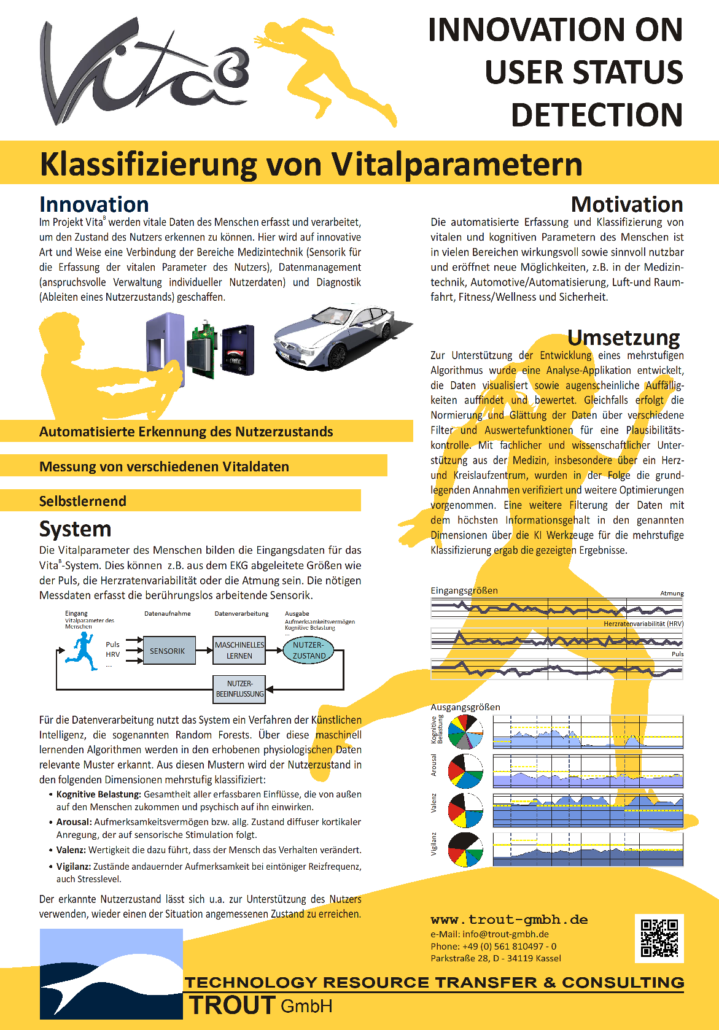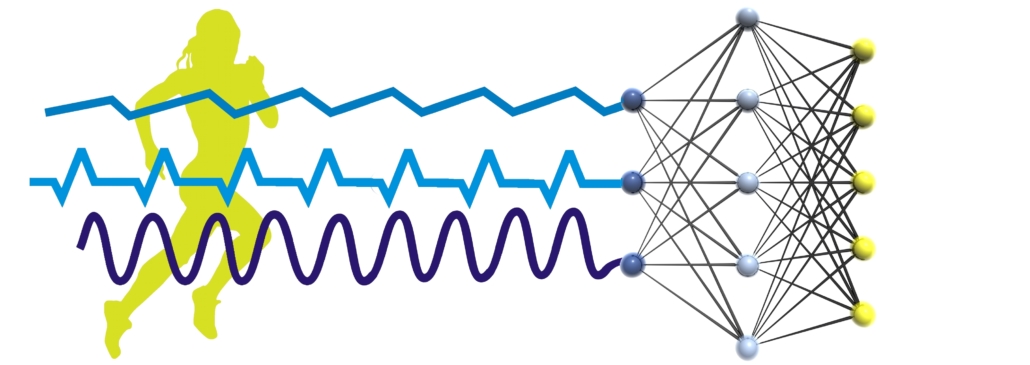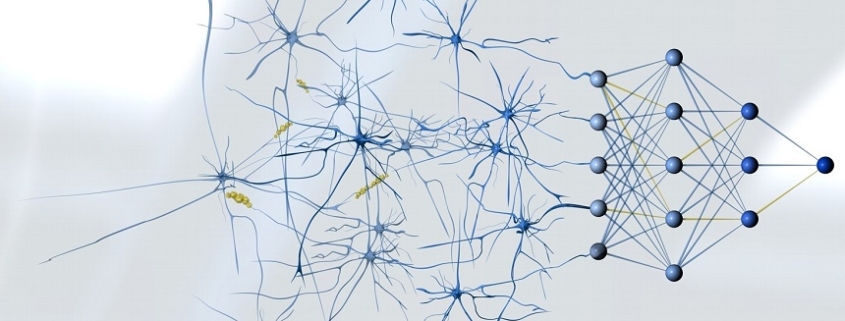VitaB
The ability to acquire vital parameters and classify cognitive conditions opens doors to new technologies in diverse areas such as medical technology, automation, aerospace, fitness/wellness and security. TROUT gained considerable expertise in biometric data processing during automotive and medical technology developments which focused on machine learning and AI (Artificial Intelligence). With variations in the heartbeat, the organism can respond optimally to changing endogenous and exogenous influences and thus adapt to the current needs of the blood supply. Heart rate variability (HRV) provides not only information on the degree of stress on the cardiovascular system, but also on the quality of cardiovascular regulation and has also become established in other areas in recent years, due to ever smaller measuring instruments and lower costs, as well as applications in clinical research.
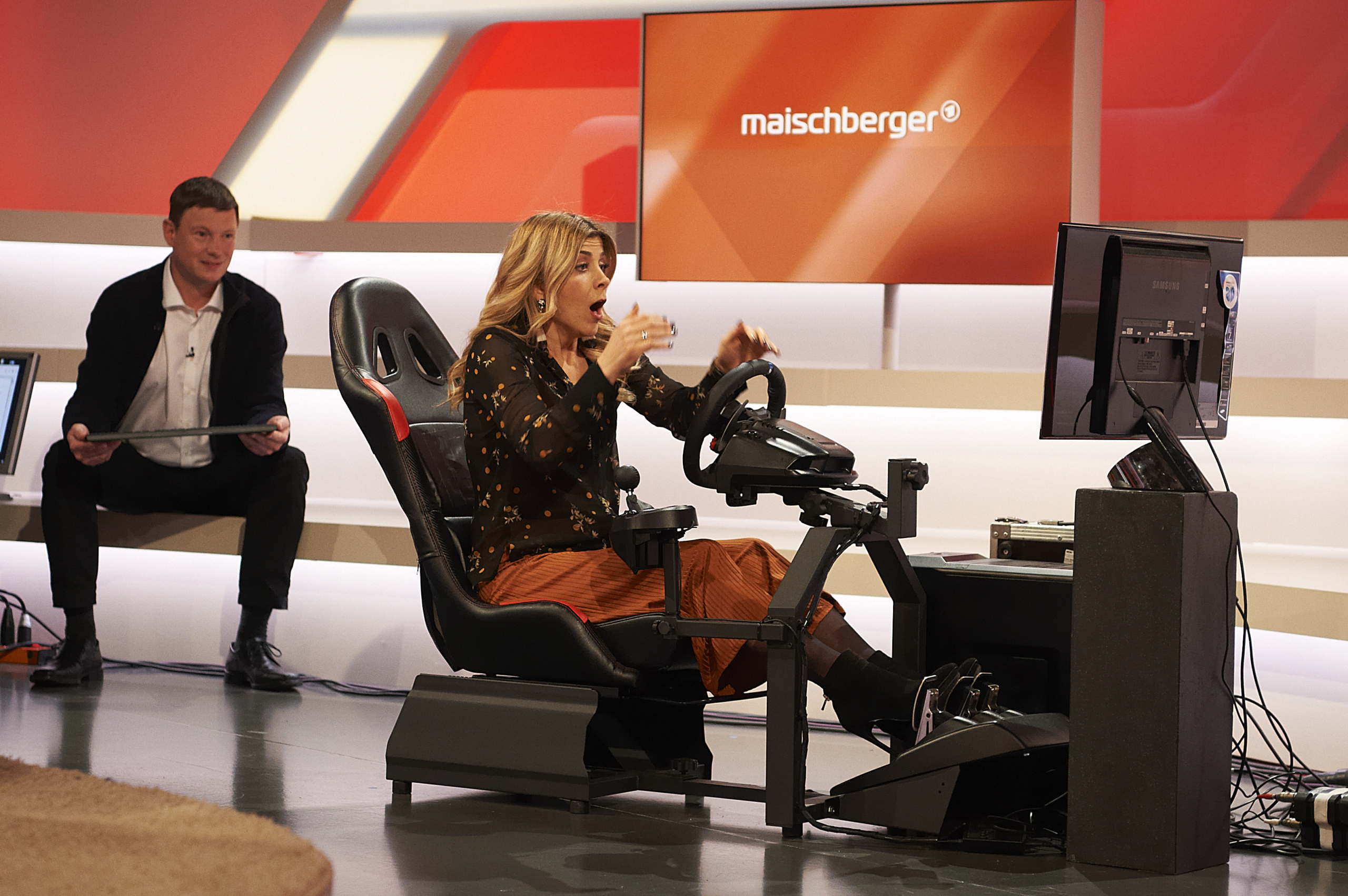
Drive test in Maischbergers TV Show
If we add information about the activities of the individual in correlation with his vital data and process both data through a machine learning system, we are now able to achieve very good results concerning the individual’s cognitive state such as stress level and fatigue. The system is adjusted by a feed-back loop mapping the individual’s self-estimation about their cognitive state.
The following features are extracted from available ECG data:
- Actual pulse related to the resting pulse of the subject.
- Average change in heart rate in percent per second averaged over 60 seconds, based on the average value determined for the subject.
- Ratio of the velocity of pulse acceleration to the velocity of pulse deceleration averaged over 60 seconds, which is an indicator of the relationship between sympathetic and parasympathetic activity. This value is then calibrated related to the subject.
- Ratio LF / HF from the Fourier Analysis determined ratio of the amplitude sums for LF and HF.
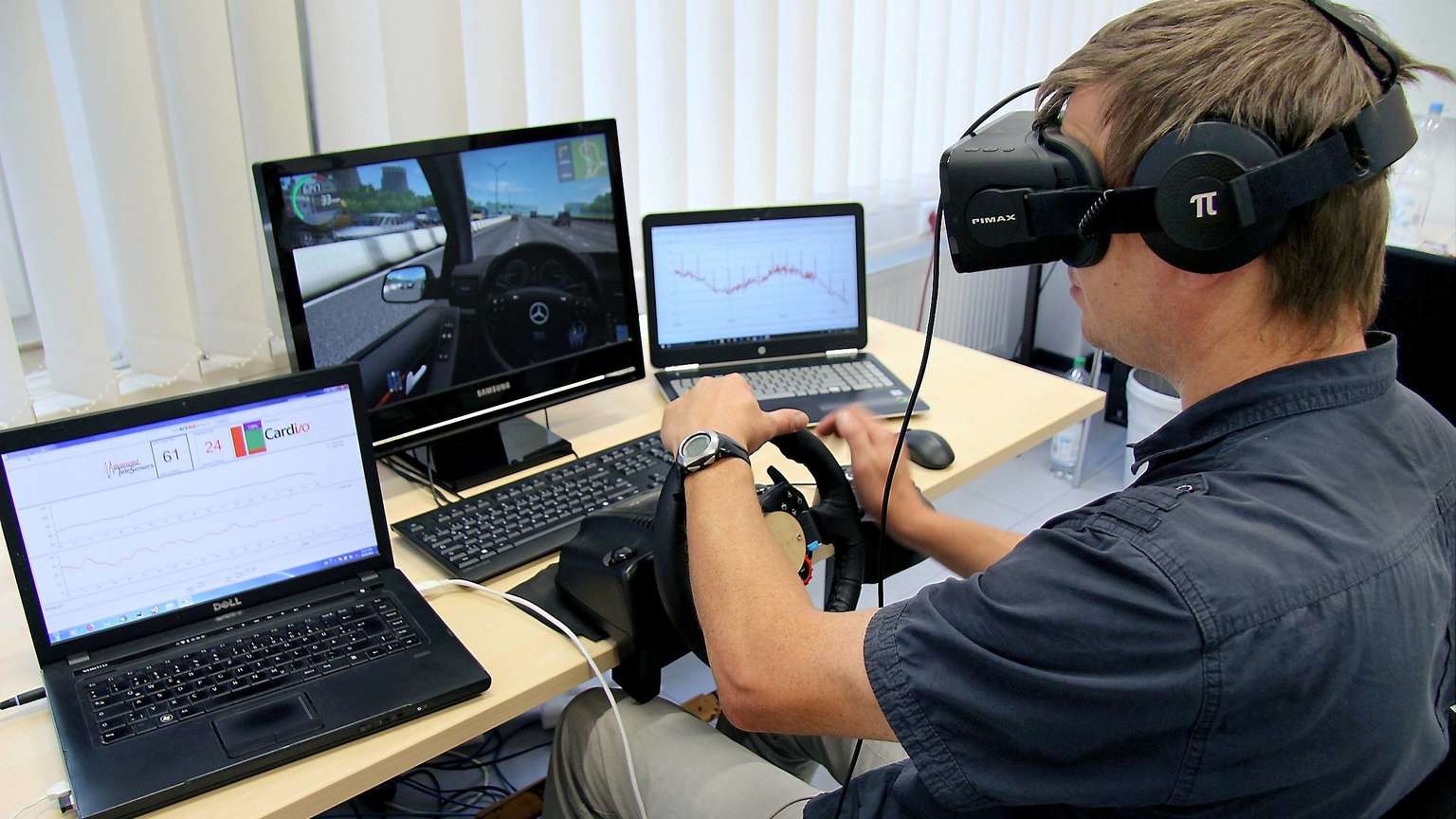
The individual is subjected to a driving simulation, which starts with a relaxation exercise in order to allow the subject to lower his pulse rate to the rest pulse rate. Then the simulation leads over a country road before it enters the rush hour traffic of a busy city. Tasks are waiting such as cars on the wrong side of the road or children running behind parked cars. To increase the stress level a math test is started after a couple of minutes. Incorrect answers are logged and a buzzer signal is activated. At the end of the drive study, after almost two hours of strain, there are twenty more minutes to go on an empty motorway in the twilight to provoke tiredness in the end.
Based on the protocols, data has been assigned to the different phases of the study and also to various levels of mental and physical stress. These classes are: neck exercise, relaxation and then on a driving simulator: adaption phase, aggressive traffic during rush hour (Fig.3), math test and night time drive.
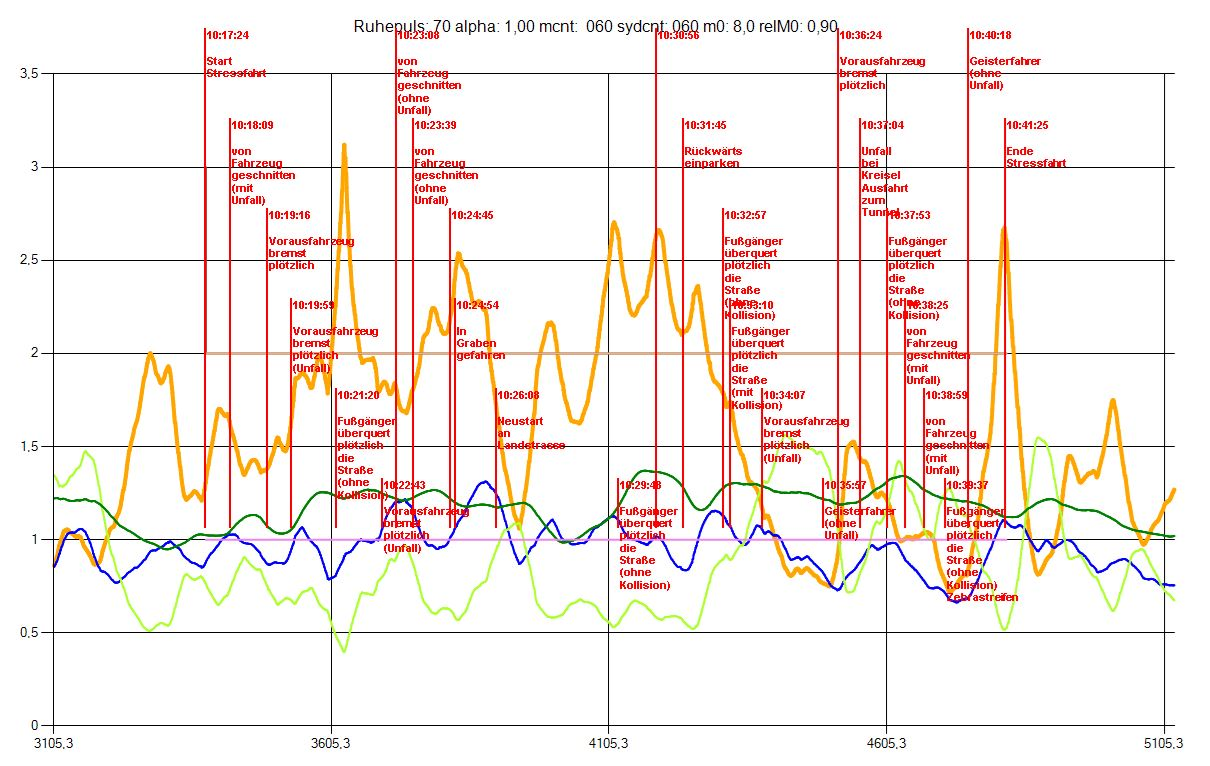
Heart rate based on the resting heart rate (green), ratio of pulse increases to pulse decreases (blue), HRV – Heart Rate Variability (light green), Event Marker (red – in German language), Calculated Stress Level (yellow) in a relative scale from 0 (no stress) to 7 (maximum stress) on the ordinate, the abscissa shows the time in seconds.
